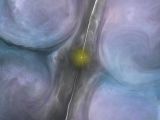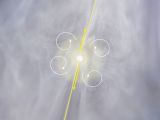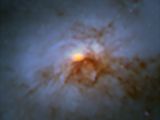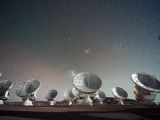In a recent paper in the Astrophysical Journal, scientists with the National Radio Astronomy Observatory explain how supermassive black holes sometimes birth so-called red and dead galaxies.
Mind you, black holes don't create red and dead galaxies in the sense that they somehow compel a bunch of stars to cuddle up together. What they actually do is shut down star formation processes in already existing galaxies.
Essentially, they force the systems that they are part and parcel of to stop producing stars. In time, the stars created before the black holes turned into cosmic dictators age and become red giants. The systems themselves become red and dead galaxies.
How black holes end star formation processes
The National Radio Astronomy Observatory scientists behind this research project say that, as part of their investigation into how black holes transform the universe, they used the Atacama Large Millimeter/submillimeter Array to study a nearby galaxy.
The galaxy, known as NGC 1266, sits at a distance of about 100 million light-years from Earth. Investigations carried out over the years have shown that, unlike the black holes located at the center of other galaxies, the one found at the core of NGC 1266 is not all that impressive size-wise.
However, data at hand indicates that high-energy jets originating from this black hole are now pretty much having their way with NGC 1266's star-forming fuel. Thus, astronomers say that the jets are chasing away hydrogen gas from a region that could easily serve as a stellar nursery.
The hydrogen gas that is being ejected from this part of the galaxy is kept from leaving the system and heading out into space by a denser region that it has not yet managed to push through. What this means is that, essentially, the energy jets are creating a whole lot of turbulence in NGC 1266.
“The jets are injecting turbulence into the gas, preventing it from settling down, collapsing, and forming stars,” explains scientist Mark Lacy. “What we see is the most intense suppression of star formation ever observed,” adds astronomer Katherine Alatalo.
A fairly odd behavior for a black hole
Writing in the Astrophysical Journal, the astronomers explain that, until their got around to studying the behavior of NGC 1266 with the help of the Atacama Large Millimeter/submillimeter Array, it was believed that black holes could only end star formation processes by pushing gas out of galaxies.
“The usual assumption in the past has been that the jets needed to be powerful enough to eject the gas from the galaxy completely in order to be effective at stopping start formation,” says National Radio Astronomy Observatory astronomer Mark Lacy.
As it turns out, this is not true. On the contrary, black holes can also create red and dead galaxies simply by agitating the star-forming gas in a galaxy to such an extent that it can no longer form massive clouds that could one day become baby stars.
Just to put things into perspective, it need be said that the region studied by this team of researchers packs the gas equivalent of about 400 million times the mass of our Sun. However, because of the energy jets, it is producing stars at a rate some 50 times lower than it otherwise would.
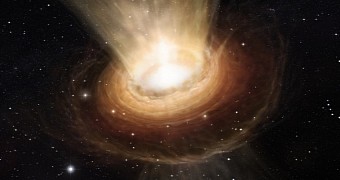
 14 DAY TRIAL //
14 DAY TRIAL // 
